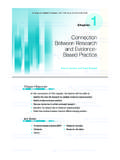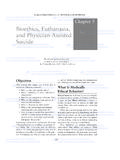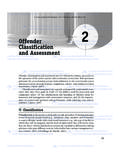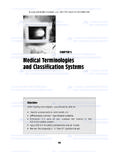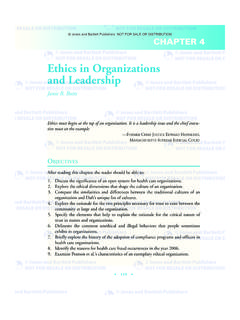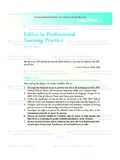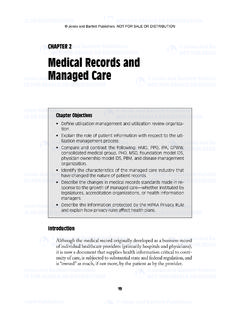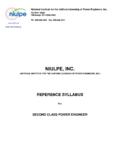Transcription of Methods of Microbiology - Jones & Bartlett Learning
1 253WE SAW IN THElast chapter that Microbiology is a discipline that is unusu-ally dependent on a distinctive set of Methods ; indeed, it is often definedby these Methods . This dependency is a consequence of the very smallsize of microbes, which means that we cannot see them without microscopy, andthe fact that we cannot do experiments with them without pure culture this chapter, we examine in some detail these Methods constitute a core of techniques common to all Microbiology . Inaddition, almost all microbiologists use a wide variety of other techniques, especiallythose of biochemistry, genetics, and molecular have improved immensely since Leeuwenhoek first observed microbeswith a simple hand lens. Compound microscopes have become highly refined andnow approach their theoretical limits. Optical Methods of enhancing contrast arenow in routine use; fluorescence microscopy allows the detection of specific mole-cules within cells, and the invention and improvement of electron microscopy haveopened an entirely new world of submicroscopic compound microscope is now routinely used for observing microbial cells.
2 Itgives a wider field of view, less distortion, and less eyestrain than the simple micro-scope, and it can be equipped for phase contrast, fluorescence, or other sophisti-cated optical the compound microscope, the objective lens forms a magnified real imageinside the tube of the microscope. This image is real and can be seen if a piece offrosted glass or a piece of paper is placed into the tube at the right spot. The ocularlens then magnifies this image again. The ultimate magnification is the product ofthe individual magnifications: a 100 objective combined with a 10 ocular gives atotal magnification of 1,000 .Unlike the objective, the ocular lens does not produce an image. In conjunctionwith the eye, however, it produces the illusion of an image, which we call a a lens produces a real image or a virtual image depends on the rela-tionship between the specimen and the focal point of the lens; you will learn aboutthis in physics (Figures and ).
3 Microscopes are used for observing microbesMethods of Microbiology Jones and Bartlett Publishers. NOT FOR SALE OR DISTRIBUTIOND uring normal use, fundamental physical properties limit the resolution of a lightmicroscope. Resolution is the ability to distinguish between two closely spacedobjects. For example, in Figure , are we looking at a single dumbbell-shapedobject or two spheres very close together as in Figure limit of resolution (d) is the distance separating the centers of two dots thatcan just barely be distinguished as limit of resolution of a microscope is related to the wavelength of the lightbeing used ( ) and the numerical aperture of the objective lens (NA) by this formula:The numerical aperture is in turn a function of two physical properties ofthe objective lens (Figure ): its diameter and its working distance(howclose to the specimen it has to come to be in focus).
4 This is expressed quan-titatively asWhere is the refractive index of the material in between the lens and thespecimen (in air, = ). Because the physical properties of each lens arefixed and cannot be altered, the only way to improve resolution with a givenlens is to increase the refractive index of the material between the lens andthe specimen. This is normally done for only very high-power lenses ( ,NA= sindNA= of the light microscope is normally limited to about m26 CHAPTER 3 Methods OF MICROBIOLOGYR etinaHuman eyeLensCorneaObjectOcular lensVirtual imageReal imageon retinaFIGURE image eye and the ocular lens together form a virtual objective lens forms a real image inside the microscope imageon retinaFIGURE formation in the compound oilObjective lensSpecimen FIGURE of the objective lens. Jones and Bartlett Publishers. NOT FOR SALE OR DISTRIBUTION100 objectives), as it is only at total magnifications of about 1,000 that the limitof resolution becomes a problem.
5 Thus, very high-power objective lenses are madeto be used with oil ( = ) and are called oil about 500 nm as an approximation of the wavelength of visible light (actu-ally it includes wavelengths from about 400 nm to about 800 nm) and a figure ofabout for the numerical aperture of a modern, high-quality objective lens usingimmersion oil between the specimen and the lens, we obtain the following value forthe limit of resolution for a modern research-quality microscope:Although this is the theoretical limit of resolution of the light microscope, it isnot the smallest object that one can see; it is actually possible to see an object abouthalf the size of the limit of resolution, but of course without any limit is on the order of the size of a procaryotic cell typically about 1 m indiameter. Thus, although cells can be easily seen, very little detail inside procaryoticcells is visible with light microscopy; even in the larger eucaryotic cells, intracellularstructures are often right at the limit of resolution, and little of their detail can be limit of resolution applies during normal use; there are several circumstancesunder which significantly smaller objects can be seen clearly.
6 One is using darkfieldillumination, discussed later; the other is the use of videotaping of a microscopicimage and then using sophisticated computer-based image enhancement this latter approach, clear images of objects less than 20 nm can be used in the traditional fashion, a microscopic specimen is flooded with lightfrom below. After passing through and around the specimen, it enters the objectivelens, which forms an image as described previously. The specimen looks darker thanthe background because it absorbs some light. Because many microbial cells are sosmall that they absorb very little light, they are often nearly transparent and very dif-ficult to see in this way. Consequently, brightfield microscopy,as this traditional wayof using the microscope is called, is rarely used anymore for observing living is still a function for this type of microscopy, however: to observe stainedcells.
7 Originally, stains were developed to enhance contrast in brightfield microscopy,before the invention of the phase contrast microscope. Stains are rarely used thisway anymore, as phase contrast is faster and allows living cells to be observed (stain-ing normally kills cells), but differential stainingis still used. Differential staininguses dyes that will stain some microbes and not others or some intracellular struc-tures and not others. This allows different types of microbes and organelles to bedistinguished by their staining reactions, even if they are morphologically indistin-guishable. The most common differential stain in use today is the Gram stain,namedafter its inventor, the Danish physician Christian Gram who invented the stain in the1880s. This stain differentiates one group of bacteria (the gram-positive bacteria, G+) from all other groups of bacteria (gram-negative, G ), based on the structureof their cell wall.
8 It is not widely used outside the bacteria. We now know that almostall gram-positive bacteria fall into a single major sublineage, and thus, the Gramstain gives us evolutionary information (Figure ).Because phase-contrast microscopy, the other widely used method of lightmicroscopy, distorts colors, it cannot be used when the object is to determine microscopy is used for observing stained cellsdnmnmm===(.)()/..0 5 5001 3 1900 19 Brightfield microscopy is used for observing stained cells27 FIGURE +(purple) and G (red) cells. Jones and Bartlett Publishers. NOT FOR SALE OR DISTRIBUTION color of a stained object (as it is in the Gram stain and other differential stains).Hence, brightfield is routinely used for observing stained have all had the experience of being in a darkened room into which a beam ofsunlight shines. In that beam we can see dust motes clearly shining against the darkbackground, yet when the room is fully illuminated, we see nothing in the air.
9 Thereason that we can see the tiny motes (which can be under 100 m) is that they scat-ter light, making a bright spot against the black background. The same principle canbe used in microscopy. If the condenser is set such that it illuminates the specimenwith a cone of light that never enters the objective lens, the field of view will be blackbecause no light is directly entering the lens. If there are objects in the field that scat-ter light, however, some of that light will enter the lens (Figure ). If there isenough of it to register in the eye, we will see the object as bright against a dark back-ground. With sufficiently intense light, extremely small objects can be seen forinstance, bacterial flagella, which are less than 20 nm thick (Figure ).Darkfield microscopy is difficult to use routinely, and, thus, it is generally used onlyby those with a specific need for it, such as microbiologists working with the very small-est microbes.
10 Some spirochetes ( , Treponema,the causative agent of several humandiseases, including syphilis) are less than m in diameter, and they are barely visi-ble in phase contrast. They are routinely observed with darkfield of their very small size, most microbial cells absorb and scatter little of thelight that passes through them; thus, they are nearly transparent and are very diffi-cult to see with transmitted light. One of the great advances in microscopy in the20th century was the development of sophisticated optical means of enhancing con-trast by manipulating the light inside the microscope. The most common type ofcontrast instrument is the phase-contrast microscope;considerably less common,but equally effective, is the interference-contrast microbiolo-gists now routinely use one of these means for observing live microbes is routinely used for observing live microbial microscopy can resolve very small objects28 CHAPTER 3 Methods OF MICROBIOLOGYA little bit of light is scattered into the objective of the light misses the objective cone of light illuminates the path in the darkfield view showing bacterialflagella.
